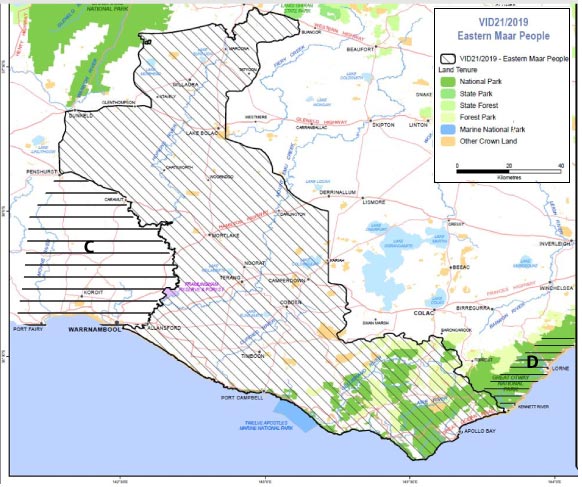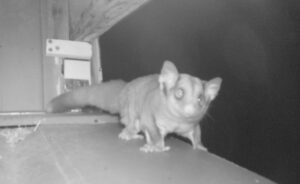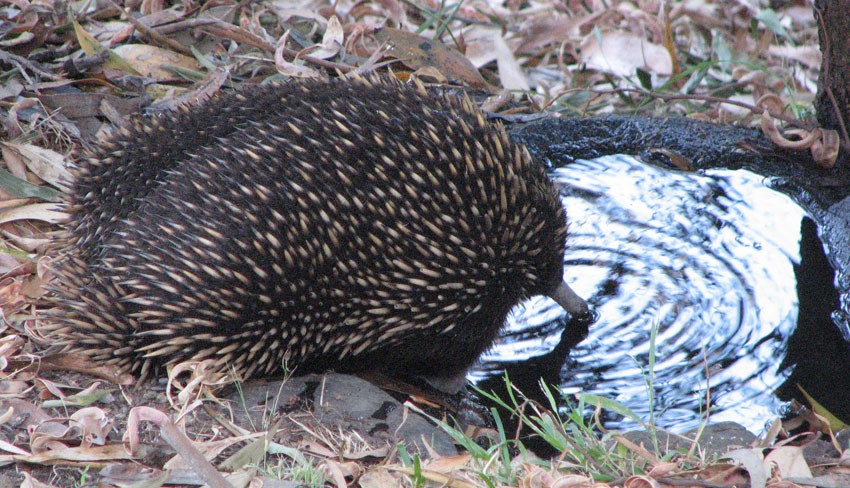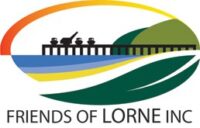Roof too shady? How you could still benefit from solar generation in Lorne
Keith Edwards
Monash University has been running a project called ‘Active Energy Precincts’ which is investigating whether microgrids can provide benefits for communities like Lorne in terms of resilience, energy costs and lowering CO2 emissions. The project is funded by the Australian Government’s Regional and Remote Communities Reliability Fund.
Their findings are about to be released. You can hear about the prospects for Lorne at this webinar:
Active Energy Precincts report, Wed. May 10, 2023, 4.00-5.00 PM.
To register click on this registration link
What’s a microgrid? An energy grid is an interconnected network for electricity delivery from producers to consumers over a wide area. A microgrid is a scaled down version of an energy grid; it operates on a local scale to connect businesses and homes to nearby energy resources such as solar panels and battery storage. And usually, it can also take electricity from and feed it into a larger grid.
The team’s approach was to conduct feasibility studies in two towns in each of three regions, one of which was the Surf Coast Shire. The two communities selected within the Shire are Lorne and Torquay.
A Lorne community workshop held in November 2022 established that Lorne people are most interested in the environmental benefits, such as reductions in emissions, that might flow from having a microgrid, and in increasing Lorne’s resilience to power outages, including those resulting from disasters such as bush fires.
The webinar will include content on:
• Microgrid (concept) design options
• The regulatory considerations for a microgrid
• Governance and ownership options
• Participation options e.g. contracts similar to retail energy agreements
• Outlining investment requirements and pathways – the next steps for Lorne and Torquay in implementing a microgrid system
_____________________________
Native title in the Great Ocean Road region
Mary Lush
On 28 March 2023 Justice Bernard Murphy of the Federal Court of Australia published his determination of native title to areas along the Great Ocean Road and inland from it. The area that native title now applies to, called the ‘Determination Area’, is shown in the map below marked by a boundary and oblique lines.
I have superimposed on the Federal Court’s map two coastal areas that were part of the application for native title, but about which agreement was not reached in time for this determination. These are shown by horizontal lines and the letters C and D. Native title in these two areas, and others not shown, is still being assessed. Lorne is part of Area D.
 Native title determination area (oblique lines) and two of the areas still under consideration (horizontal lines). Sources: Federal Court of Australia and Eastern Marr website
Native title determination area (oblique lines) and two of the areas still under consideration (horizontal lines). Sources: Federal Court of Australia and Eastern Marr website
In making this particular ‘determination’ Justice Murphy drew on many sources, including the Traditional Owner Settlement Act (Victoria), the Native Title Act (Commonwealth) and a native title determination west of Port Fairy. What does it all mean? For a start native title does not apply to areas covered by freehold title, and does not apply to minerals, petroleum or groundwater.
In the following text I have summarised Justice Murphy’s ‘reasons for judgement’, with occasional reference to other parts of the document, or to other sources when additional background is needed. For more information go to the original on the Federal Court website – ‘Austin on behalf of the Eastern Maar People V State of Victoria’
Context
What’s a ‘determination’? When the parties to a dispute (or potential dispute) reach agreement, a judicial review is often needed to give the agreement legal standing. The aim of this review was to ensure that the agreement was consistent with law, and was based on a reasonable and rational assessment of all available material.
The title of this determination, Austin…V the State…, is somewhat misleading. First because Austin is more than one person and should be read as Janice Austin and others on behalf of the Eastern Maar People and secondly because, and contrary to what is implied by the ‘V’ (versus), there was no Court contest (hearing) between Austin and the State.
After the lodging of their application for native title in 2012, the Eastern Maar and the State of Victoria entered into negotiations followed by mediation. Agreement was reached about most of the area claimed, meaning that no Court hearing was needed for native title to be declared over the undisputed areas. Areas that were part of the application, but that remain under discussion, are excluded from the Determination Area. This includes the area around Lorne (Area D on the map). There is no information in the Federal Court document about the contested areas apart from the statement that these are either listed for a two week hearing of separate questions to commence on 1 May 2023, or subject to ongoing mediation.
Who can apply for native title?
Applicants for native title must show that there was, at [the time when Britain claimed] sovereignty [effectively between 1830 and 1850], a body of persons united in their acknowledgment and observance of a body of laws and customs, who held rights and interests in land and waters pursuant to those laws and customs, and by which they were connected to the land and waters. The group must have maintained its identity and its connection with the land and waters, and must continue to acknowledge the laws and observe the customs substantially uninterrupted, from sovereignty to the present. From Section 29.
Who comprises the Eastern Maar?
Maar society has overlapping eastern and western domains. I assume that the region identified as C on the map is one part of the overlap.
For the purposes of this (and other) native title determinations, the Eastern Maar are those who either:
(a) identify as being from the eastern domain of the Maar speaking people and are recognised as being from the eastern domain by the Eastern Maar Peoples; or
(b) identify as Maar, Gunditjmara, Tjap Wurrung, Peek Whurrung, Keeray Woorong (Kirrae Whurrung), Kuurn Kopan Noot, Yarro Waetch (Tooram tribe), Djargurd Wurrung, Gulidjan and/or Gadubanud and are recognised as being from the eastern domain by the Eastern Maar Peoples.
The Eastern Maar Aboriginal Corporation will hold the native title as an agent for the Eastern Marr.
What are the rights of native title holders and ‘others’?
Justice Murphy dealt with these in Section 28 of his summary. In edited form he said that native title rights and interests:
- … consist of non-exclusive rights to have access to or enter and remain on the land and waters, to camp on the land and waters landward of the high-watermark of the sea, to use and enjoy the land and waters, to take the resources of the land and waters and to protect places and areas of importance in the land and waters.
- … must only be exercised for a non-commercial purpose to satisfy personal, cultural, domestic or communal needs.
- … are subject to and exercisable in accordance with the traditional laws and customs of the native title holders and the laws of the State and the Commonwealth, including the common law…
- … do not confer possession, occupation, use and enjoyment of the Determination Area on the native title holders to the exclusion of all others.
In a part of the document (Section 15) before Justice Murphy’s summary, it is stated that the rights of Native Title holders and others co-exist and that … other interests… [and activities] prevail over the native title rights and interests and any exercise of the native title rights and interests, but do not extinguish them.
How does the determination affect public lands including parks?
Native title is not recognised where other forms of exclusive title are held, such as freehold land, or on Crown lands set aside for public works, such as roads and schools. Native title is legally considered to have been ‘extinguished’ in such areas. Under the original Native Title Act, native title was arguably extinguished in public parks and reserves. An amendment (Section 47C) to the Native Title Act, however, allows this extinguishment to be overturned in some circumstances, potentially opening additional areas to native title.
Justice Murphy regards the Eastern Maar determination as unusual because it has been made before the State and the Eastern Maar have reached agreement about these parks and reserves. Instead, the Court order requires the Eastern Marr and the State to start negotiations.
Most of the reserves affected are listed in Schedule 4 (‘Proposed Section 47C Agreement’) of the Federal Court document. It is beyond the scope of this summary to provide details, but readers should note that within many reserves there are areas that are excepted from the negotiations. For example, the Great Ocean Road itself and many other roads will be excepted from negotiations about the Great Otway National Park.
Other reserves affected by this determination include the Twelve Apostles Marine National Park, Port Campbell National Park, Lake Milangil, Bay of Islands Coastal Park, Gellibrand Bushland Reserve, Lake Purrumbete, Cobra Killuc Conservation Reserve, Lake Colongulac, and Lake Bookar.
Conclusion
Justice Murphy concluded that the Eastern Maar and the State had entered freely into a rational agreement that complied with the Native Title Act, and that the Federal Court had the power to approve the determination.
This particular determination however may not have quite the finality of some others. Justice Murphy noted that it was unusual in that (a) the matters relating to parks and reserves had not yet been resolved, and (b) the State has not carried out detailed mapping of areas in which native title has been extinguished. He held that detailed mapping might never be needed and to wait for it would cause unnecessary delay. He noted that these things may lead to an amended claim application… or an application to vary an approved determination of native title.
_____________________________
Point Grey – we’re getting there, slowly
Plans for the redevelopment of Point Grey (the pier area) stretch back 25 years. But this time it’s looking like we’ll get there.
The “indicative timeline” for completion is March 2026, with construction starting at the end of the January school holidays in 2025, assuming all goes well. It is an “indicative timeline” because the new plans have not yet been drawn up and approved. The funding agreement has just been signed.
At issue will be what can be permitted on the site according to the Marine and Coastal Act (2018) which is implemented through the Marine and Coastal Policy (2020). We know that an expanded hospitality and event space is not permitted, because that was rejected by VCAT. But what about something like what we already had?
The seafood restaurant seated 120 people and was open for coffee as well as meals. Is that allowed? The building itself tells the story of Lorne’s industrial history and the chance to keep, restore and repurpose what we can is preferred over any reconstituted “look alike”. The Lorne Historical Society plans to continue using the venue for telling Lorne’s logging and fishing past, potentially utilising technologies that can allow sound archives to be tapped. Friends of Lorne has suggested underwater cameras on the pier or reef to allow marine life to be observed on screens inside.
The community co-design group has recently welcomed advice and support from a professional planning and legal services group. Their role is to build our capacity and help us better understand what’s possible within state plannings laws. Unlike some years ago under the Great Ocean Road Coastal Committee (GORCC), GORCAPA is listening to and working with the community. Don’t forget, they abandoned GORCC’s Beacon Building plans even before VCAT told them that they must.
_____________________________
Can neighbours be expected to preserve Lorne’s character?
Penny Hawe
If you read the review of Totti’s restaurant in The Age just before Easter, you will have seen the remark about Lorne; that Lorne’s beautiful homes are fast being replaced with “glass boxes”.
The comment stung.
The Surf Coast Shire Council is currently reviewing the Neighbourhood Character Overlays (NCOs) and planning processes in surf coast towns. Friends of Lorne lobbied for the introduction of the Council’s Lorne Strategy (2018) which led to our NCO (2019) and its key principles of protecting vegetation and keeping a coastal style of architecture. That is, “design, materials, features and colours that contribute to the identity of Lorne, maintaining a low-rise building form, that blends with the surrounding landscape and provides openness between properties”. For example, buildings should not cover more than 35% of a lot. Maximum building height is 7.5 metres, and canopy trees should be planted with at least two in the setback area at the front of the building.
A workshop run by the Council and held on a Saturday morning last month attracted 21 enthusiastic Lorne participants. Participants endorsed the key principles already in the NCO. However, the main vexation was that the NCO is not being implemented. Why not?
When a planning application is lodged, immediate neighbours are informed and have an opportunity to object. View loss is a common concern. So much so that objectors are advised in writing by the Council, prior to an on-site meeting with the applicants and objectors, that “case law has established that there is no legal right to a view.”[1] Nonetheless, the degree of view impact is assessed by asking applicants to erect height poles and by Planning Officers entering objectors’ homes as part of the on-site assessment. Recommendations to approve, reject or modify applications are made by the Planning Officers. Reports are reviewed and signed by the Planning Coordinator or Planning Manager and, depending on the number of objections, Council is briefed on “significant” applications. In some instances, applications go to Council for decisions.
Friends of Lorne is aware of the detail of these processes as we recently lodged our first objection to a private home development. Our objection was deliberately not based on view loss. Or privacy concerns. Or noise. We left those issues to the neighbours as, by definition, they pertain to immediately adjacent matters. We focussed our attention only on the parts of the NCO that are whole of Lorne issues – like vegetation loss and threat to neighbourhood character/streetscape.
We await the outcome. Meantime, we make the following observations.
Objecting takes a lot of effort. The Aireys Inlet Aireys Inlet and District Association (AIDA) makes it their business to review every planning application in their area. Friends of Lorne is assessing our person-power to do this here, so if you are willing to help, please get in contact.
Second, the number of objections seems to matter, yet these are defined by proximate, potentially over-localised, concerns. Substantive issues (like loss of a wildlife corridor) may not be identified, especially if they require knowledge which many people might not have.
Third, the process is designed to classify interested parties as “objectors” even before the on-site assessment and deliberation has started. A comment made at the Lorne NCO workshop was that pre-application meetings between architects/homeowners and interested parties/community might help shape more context-sensitive proposals at the outset. This could help prevent frustration, and money spent at VCAT.
Finally, the process requires contest and that’s a Big Ask of neighbours – to confront the people who bring in your bins, people you might have known for years, or new people you feel you should make welcome. At the onsite meeting we attended, one neighbour was in his front yard and stopped to chat to Friends of Lorne. Asked did he object, he explained “No. I am too old for fights now.” He then disappeared quickly into his home . Our point is that defending Lorne’s character should not rest on a small number of “affected” people having to make fights. We are all affected when Lorne loses its beauty, bit-by-bit.
We’ll keep you informed of the progress of the Council’s NCO planning applications review process. We’ll alert you to any further workshops. Do think about putting your hand up to help us. The Council may be bolder in implementing the NCO, and refusing inappropriate applications, if it knew it had community support to do so, exemplified in Friends of Lorne involvement .
[1] For example, Healy v Surf Coast & Others (2005) VCAT 990 and Wright v Greater Geelong CC (2013) VCAT 2092
_____________________________
Natural history note: Drinking isn’t simple!
Mary Lush
 Image: Mary Lush
Image: Mary Lush
Sugar glider on a Lorne roof.
How does it drink? Click on drink to see.
Do kangaroos lap or suck when they drink from a pool of water? It had never even occurred to me to wonder until one day I was watching a kangaroo at a small pool on my block in Lorne. It was lapping. I was surprised to find I was surprised. A sort of unknown unknown. As we all know, human beings suck. And I can personally attest to the fact that horses, cows and sheep do too, but dogs and cats lap.
I have taken to watching the way animals visiting my pool drink. Foxes lap. And so do sugar gliders.
Birds, I once would have said, all drink gravitationally. Meaning that they fill their beaks then throw back their heads to let the water run down their throats. Wrong; the resident bronzewing pigeons suck. No head throwing. So do other pigeons.
 Image: Mary Lush
Image: Mary Lush
Unfortunately, when this echidna dropped in for a drink, I was so taken with the concentric circles in the water that I forgot to observe whether it lapped or used its beak as a straw. I suspect it lapped because that’s how they eat ants. And the nostrils in the beak may, like holes in a straw, make sucking problematic.
If my interest in drinking methodology strikes you as odd, I can only say that I am not alone. There are endless scientific publications on the topic. It turns out, among other things, that lapping and sucking are not always entirely different processes.
My favourite drinker from the published work is a bat. It apparently pokes its tongue into water and leaves it there. It doesn’t lap. Instead, water moves along groves in the tongue’ s surface by some combination of capillary rise and pumping.
If you are interested in the anatomical features needed to lap and/or suck you will find lots of information on the web to entertain you. And we haven’t even started on what insects do.
_____________________________
